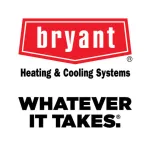
COVID-19 Response for Schools: Air Purification
Advanced Air Quality Techniques
In addition to improved ventilation and filtration, Harvard's School of Public Health has also recommended that school's consider advanced air quality techniques; such as the use of ultraviolet germicidal irradiation (UVGI). UVGI uses low-wavelength UV-C light to disinfect surfaces and the air, and has been shown to be effective in destroying viruses such as influenza. As these systems require great care in implementation, the Harvard School of Public Health advises schools considering UVGI to consult outside technical experts.
In-Duct Air Disinfection
With in-duct UVGI systems, banks of UV-C lights are installed within HVAC systems to destroy bacteria and viruses in recirculated air that are not captured by an air filter.
When exposed to UV-C light, viruses are rendered inactive within 0.25 seconds.
In-duct UVGI systems should always be accompanied by mechanical filtration system to ensure maximum efficiency.
Upper-Air Disinfection
With upper-air UVGI systems, UV fixtures are mounted within the room at a height of 7 feet or higher.
Upper-air UVGI systems should be considered for areas with a high risk of transmission, or in spaces with little to no ventilation.
Upper-air systems work best when the air in a room is well mixed so that airborne virus emitted by occupants below is lofted into the upper-air spaces where it can be treated.
A Note On Humidity:
The Harvard School of Public Health also suggests that schools consider controlling indoor humidity to help mitigate the transmission of COVID-19. According to their research, people's physiological defenses against respiratory viral infection function best at mid-range humidity levels.
Humidity also impacts environmental quality, as dry environments are associated with higher incidence of some viral infections, including influenza. However, too much humidity increases the potential for mold growth.
While the positive impacts of humidification on COVID-19 specifically have not been determined, avoiding dry conditions and maintaining relative humidity at 40-60% is generally thought to be an effective strategy in reducing the risk of viral transmission.



